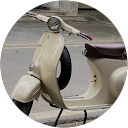Mausoleum of Emperor Khai Dinh (Ứng Lăng): The Dynasty's Final Masterpiece
The Mausoleum of Emperor Khai Dinh, officially named Ứng Lăng, commands attention as the last imperial tomb built by the Nguyen Dynasty. Completed in 1931 after 11 years of painstaking work, this monument showcases a dramatic departure from the traditional Vietnamese style of its predecessors. It represents a bold, sometimes controversial, fusion of Vietnamese, Buddhist, Roman, Gothic, and French colonial architecture, making it one of Hue’s most unique and visually arresting UNESCO sites.
I. Architecture and East-West Fusion
Emperor Khai Dinh (Nguyễn Phúc Tuấn) personally designed his tomb, reflecting his extravagant tastes and the transitional period of his reign (1916–1925), which was heavily influenced by the French. The tomb’s exterior, built from modern materials like slate and concrete, appears dark and imposing. However, visitors must climb 127 elaborate steps, passing through several terraces, to reach the climax of the site.
The Courtyard (Bái Đình): This second terrace features a massive honor guard of stone statues, depicting mandarins, horses, and elephants. These detailed statues display a stronger European influence compared to earlier, simpler tomb figures.
Thien Dinh Palace: This final, main structure holds the Emperor’s physical remains. It contrasts sharply with the exterior; its five connecting rooms dazzle with vibrant color, featuring intricate mosaics crafted from broken porcelain and colored glass. The main chamber contains a gilded bronze statue of Emperor Khai Dinh sitting on a golden throne, underneath which his body rests 18 meters below.

II. History and Cultural Significance
Khai Dinh started construction in 1920, and he levied a 30% tax increase on the populace to fund its exorbitant cost, which caused public resentment at the time. Despite its small size relative to other royal tombs, Khai Dinh’s is renowned for its opulent decoration and expensive, imported materials. Its unique style serves as a poignant symbol of the Nguyen Dynasty’s final days, showcasing a ruler who embraced foreign aesthetic influences.
Consequently, historians view the tomb as a masterpiece of transition, documenting the convergence of two distinct cultures.

III. Essential Visitor Information (2025)
The tomb’s hillside location offers stunning views and an unforgettable sightseeing experience.
Location/Address: The mausoleum is situated on Chau Chu Mountain, about 10 kilometers southwest of Hue City Center.
Getting There: Tourists most commonly reach the site by taxi, private car, or as part of a motorbike tour.
Opening Hours: The site is generally open from 7:00 AM to 5:30 PM daily.
Entrance Fee (as of 2025): Visitors pay a fee upon entry (cash is highly recommended).
Adults: 150,000 VND
Children (Ages 7–12): 30,000 VND
Tip: Purchase a combo ticket if you are also visiting the Imperial City and other tombs like Tu Duc’s or Minh Mang’s to save on total admission costs.
Visitor Note: The ascent involves many stairs, so wear comfortable shoes. Also, visitors must dress modestly and refrain from taking photos inside the main Thien Dinh Palace worshipping room.




